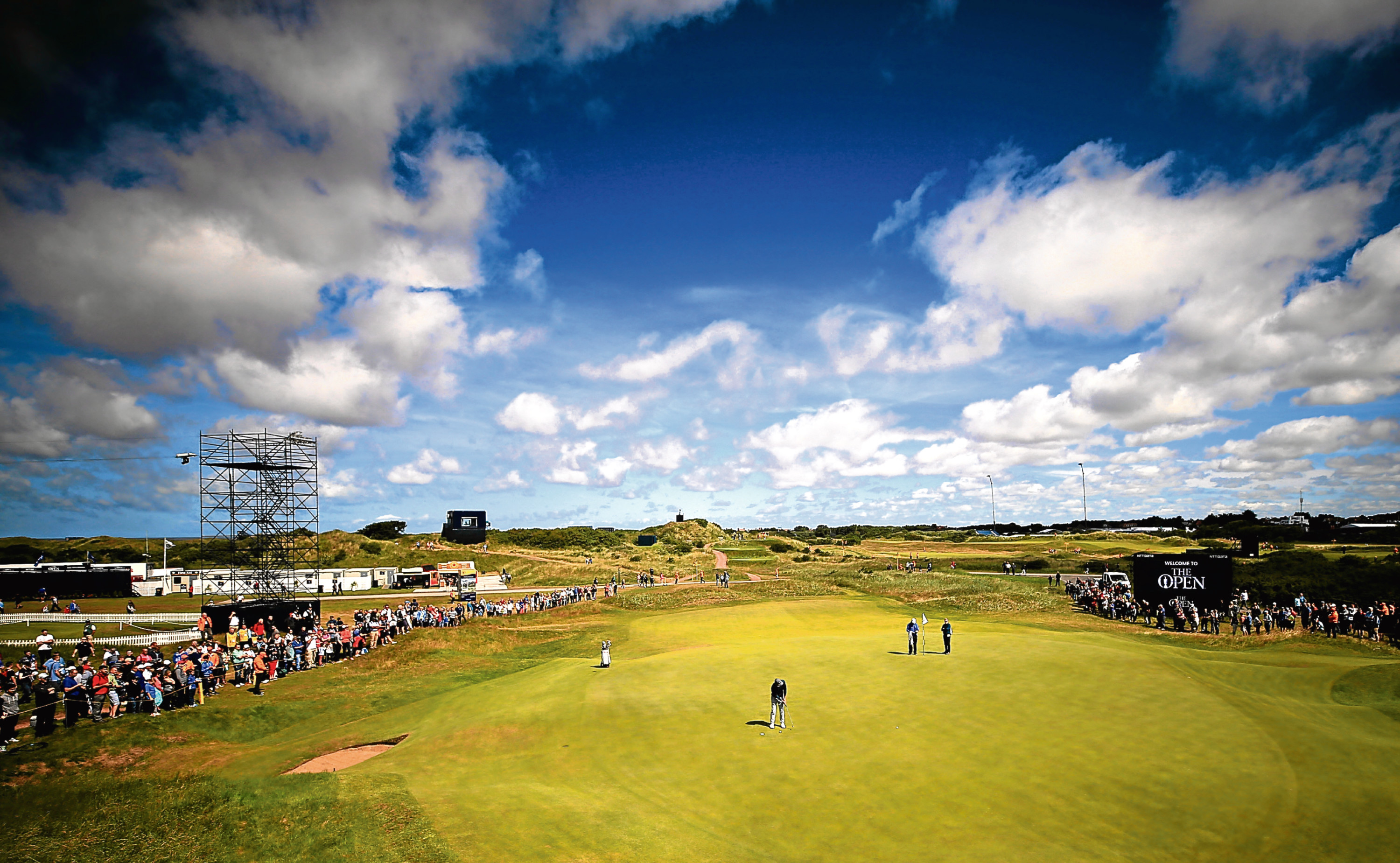Golf on TV has never been so good, it seems. This week our game gets the “Wimbledon” treatment – the combined weight of the world’s media will for a week cover every cough and sniff from Royal Birkdale.
Three broadcasters – Sky, NBC and Asahi TV of Japan – are swamping the Lancashire links for the Open Championship with their personnel (all those people you see inside the ropes blocking your view? It’s them, not us written press guys, honest).
Sky’s innovation in their first year – at short notice – at Royal Troon last year was brilliant. They’ll add on more bells and whistles this year.
The BBC are of course still here despite no longer having exclusive live rights. The 5Live team fronted by their outstanding golf correspondent Iain Carter is present en masse, they have a huge online team, and even the reduced TV staff, now headed by Eilidh Barbour instead of oor Hazel, is plentiful on the ground.
But the Beeb’s attitude to golf has many in the sport puzzled and angry. They look at Wimbledon and the all-court coverage there, the clearly lavish investment to retain rights and the sheer scope of their apparent obsession and wonder why don’t the Corporation do that in golf anymore?
People in golf don’t understand and event resent the BBC’s apparent disregard for the every week business of golf.
Last week, the Beeb excitedly trailed their twitter and online coverage of a packed sporting weekend – Wimbledon finals, British Grand Prix, Second Test match at Trent Bridge, World Triathlon, UFC at Glasgow. Not a mention of the Scottish Open nor the US Women’s Open.
Even on their 5Live sports news bulletins, you couldn’t hear a word on golf.
How can this be? How can a sport such as golf get so ignored by our national public service broadcaster? Isn’t there something in their charter that insists they must cover one of our premier native sports?
I tend to think that people in golf – including this writer – get lost in our own wee world. We assume that the general public is as engaged by the characters and the drama as we are.
But in truth the BBC’s interest in golf – or lack of it as they’ve let rights package after rights package drift away to Sky – surely just reflects what they’re hearing from their consumers.
The BBC has a public service remit but it’s also in a competitive market. In the places where they invest heavily in sport – Wimbledon and F1 mostly now – it’s because they’ve identified them as the more popular sports the public want to watch.
For years I was puzzled and resentful that tennis – a sport I don’t much like – got such coverage from the BBC compared to golf. But all you have to do to understand the reason why is to look at the people whose bums are on the seats at Centre Court.
Yes, they’re middle class and all that, but golf is hardly less genteel. The real difference is sex.
The crowds at Wimbledon are at least half female, watching both the men’s and women’s games. No other sport, without exception, both live and on TV, engenders as much interest from women as tennis.
It’s not even a close race. The half of the population that, generally, doesn’t give much of a fig about sport is engaged by tennis, and clearly that’s a market and a demographic the BBC would be crazy to ignore.
Tennis particpation is booming. Golf participation is slumping. And if you think that squirrelling the sport away on the limited audience of Sky is damaging, imagine what a complete blackout of a major championship is going to do.
Last week we learned that Sky had lost rights to the PGA Championship next month, and that it’s probable there will be no pictures from Quail Hollow available – at least by legal means – to golf fans in Europe.
The PGA of America has decided they are looking at other outlets – one assumes live streaming on Twitter or Facebook, or something similar. This way they can control coverage better and also presumably take the advertising revenues that usually go into the pockets of broadcasters.
That’s okay on paper, but given so much of the income into golf – as with all sports – is driven by TV rights it’s an incredibly risky road to go down right now, when the technology and outreach of the alternatives remains essentially unmeasurable.
But it’s a clear trend. The NFL, the biggest sport in the biggest media market on the planet, started “giving away” live games on Twitter last year.
They did so partly in response to diminishing TV audiences. People are watching their sport in different ways to the old days when we gathered round a box in the corner of the living room.
Minority sports like golf are going to have to fight to get this new, fresh kind of consumer.
THIS is why golf’s audience has to get younger, less sexist, and more diverse. It’s not political correctness, whatever that is anyway. The future health and popularity of our great and historic game depends on it.
